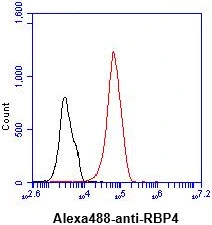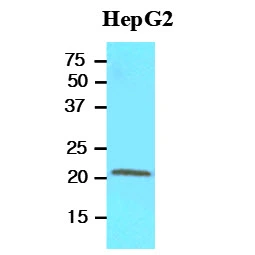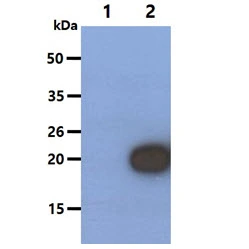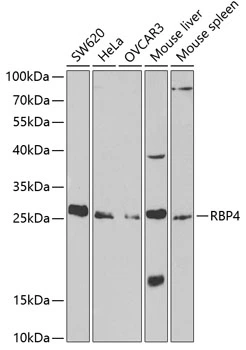
FACS analysis of HepG2 cells using GTX57569 RBP4 antibody. Cell Number: 1 x 10? cells Primary antibody: Red line Antibody amount: 2-5 microg
RBP4 antibody [AT2B4]
GTX57569
ApplicationsFlow Cytometry, ImmunoFluorescence, Western Blot, ImmunoCytoChemistry
Product group Antibodies
TargetRBP4
Overview
- SupplierGeneTex
- Product NameRBP4 antibody [AT2B4]
- Delivery Days Customer9
- Application Supplier NoteWB: 1:500-1:1000. *Optimal dilutions/concentrations should be determined by the researcher.Not tested in other applications.
- ApplicationsFlow Cytometry, ImmunoFluorescence, Western Blot, ImmunoCytoChemistry
- CertificationResearch Use Only
- ClonalityMonoclonal
- Clone IDAT2B4
- Concentration1 mg/ml
- ConjugateUnconjugated
- Gene ID5950
- Target nameRBP4
- Target descriptionretinol binding protein 4
- Target synonymsMCOPCB10, RDCCAS, retinol-binding protein 4, PRBP, RBP, plasma retinol-binding protein, retinol binding protein 4, plasma, retinol-binding protein 4, interstitial
- HostMouse
- IsotypeIgG1
- Protein IDP02753
- Protein NameRetinol-binding protein 4
- Scientific DescriptionThis protein belongs to the lipocalin family and is the specific carrier for retinol (vitamin A alcohol) in the blood. It delivers retinol from the liver stores to the peripheral tissues. In plasma, the RBP-retinol complex interacts with transthyretin which prevents its loss by filtration through the kidney glomeruli. A deficiency of vitamin A blocks secretion of the binding protein posttranslationally and results in defective delivery and supply to the epidermal cells. [provided by RefSeq, Jul 2008]
- Storage Instruction-20°C or -80°C,2°C to 8°C
- UNSPSC12352203





![ELISA analysis of antigen using GTX60427 RBP4 antibody [4C2]. Red : Control antigen 100ng Purple : Antigen 10ng Green : Antigen 50ng Blue : Antigen 100ng](https://www.genetex.com/upload/website/prouct_img/normal/GTX60427/GTX60427_20170912_ELISA_w_23061123_932.webp)

